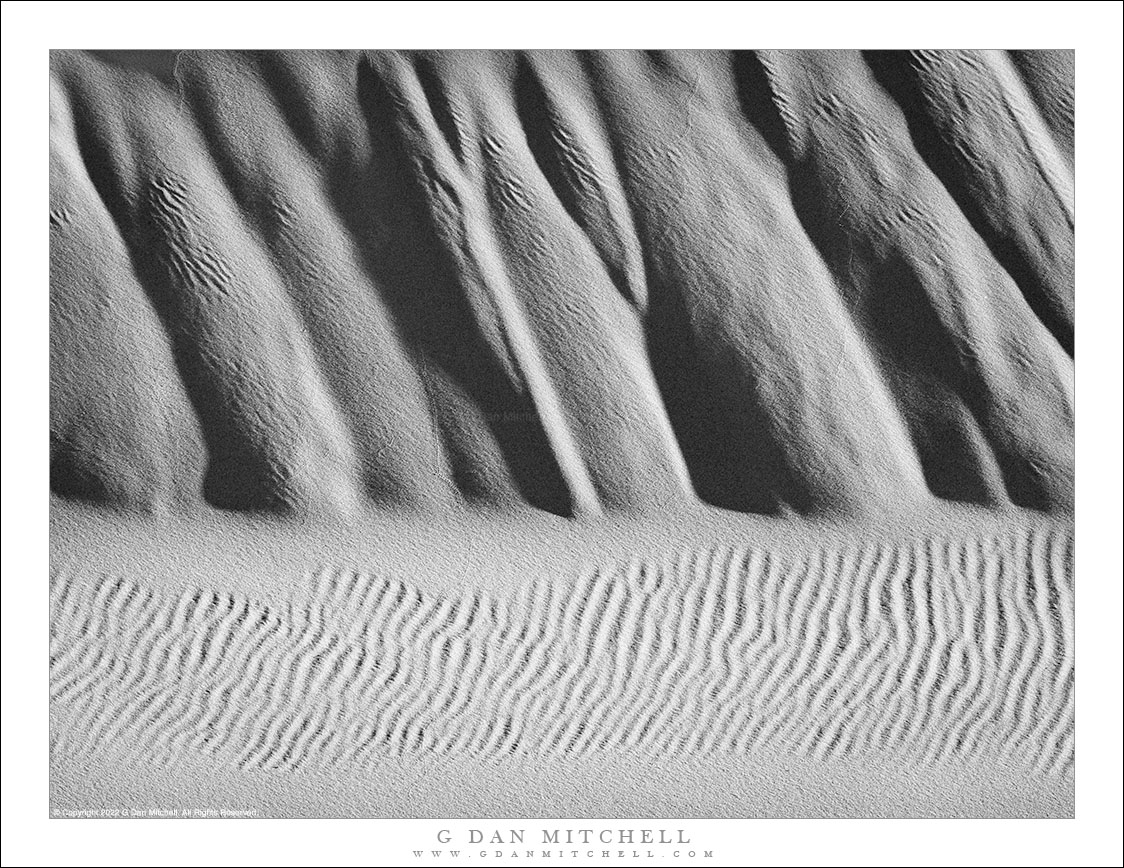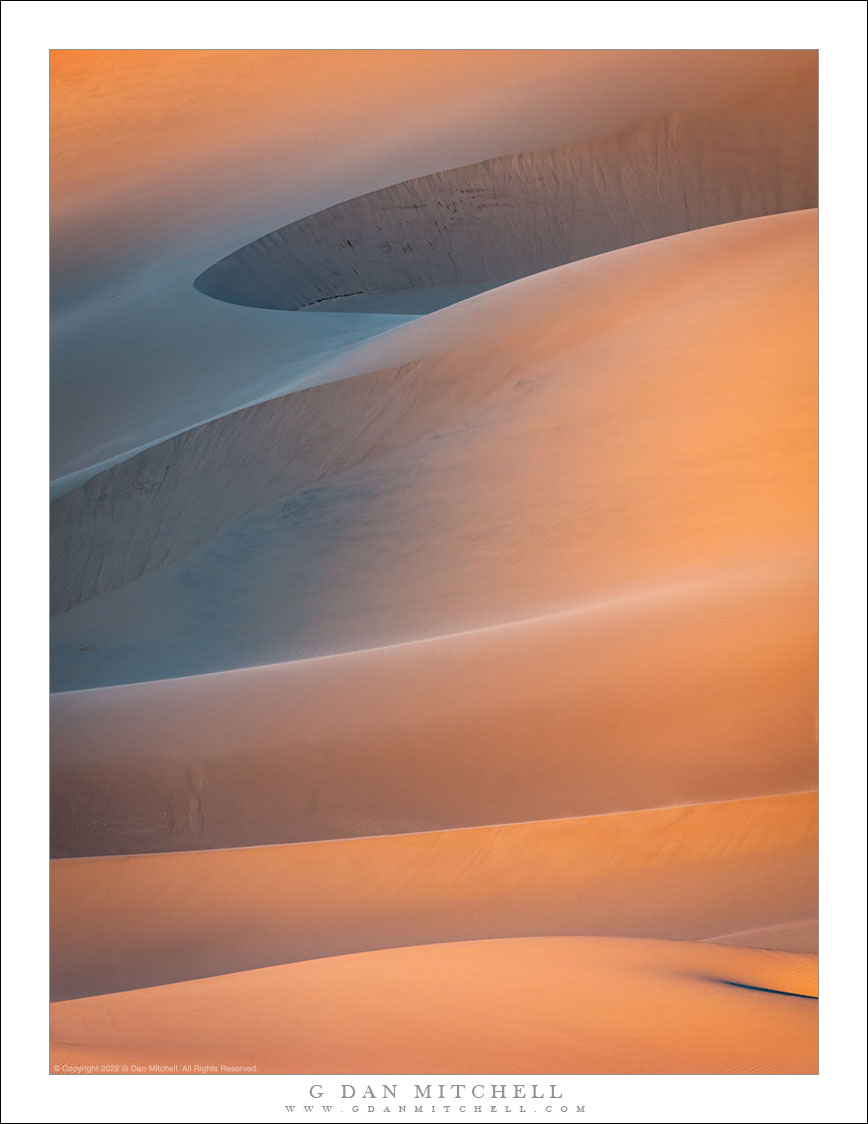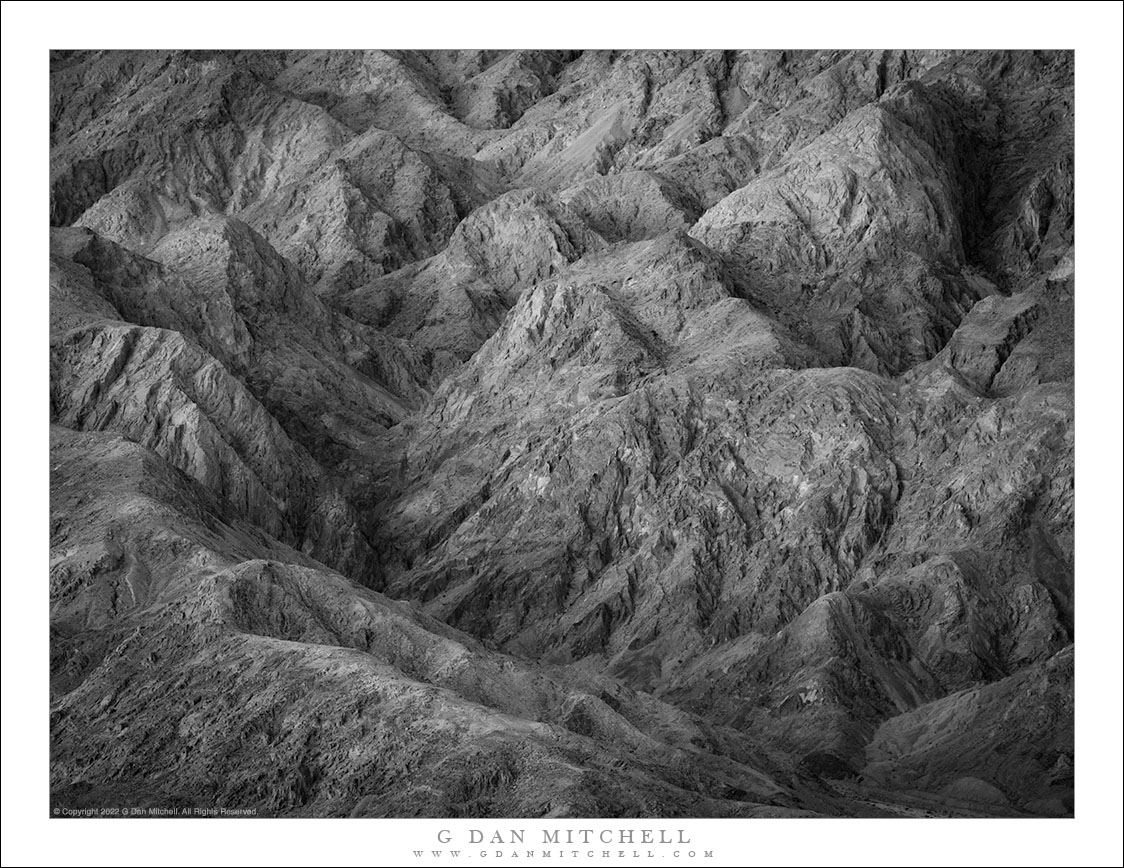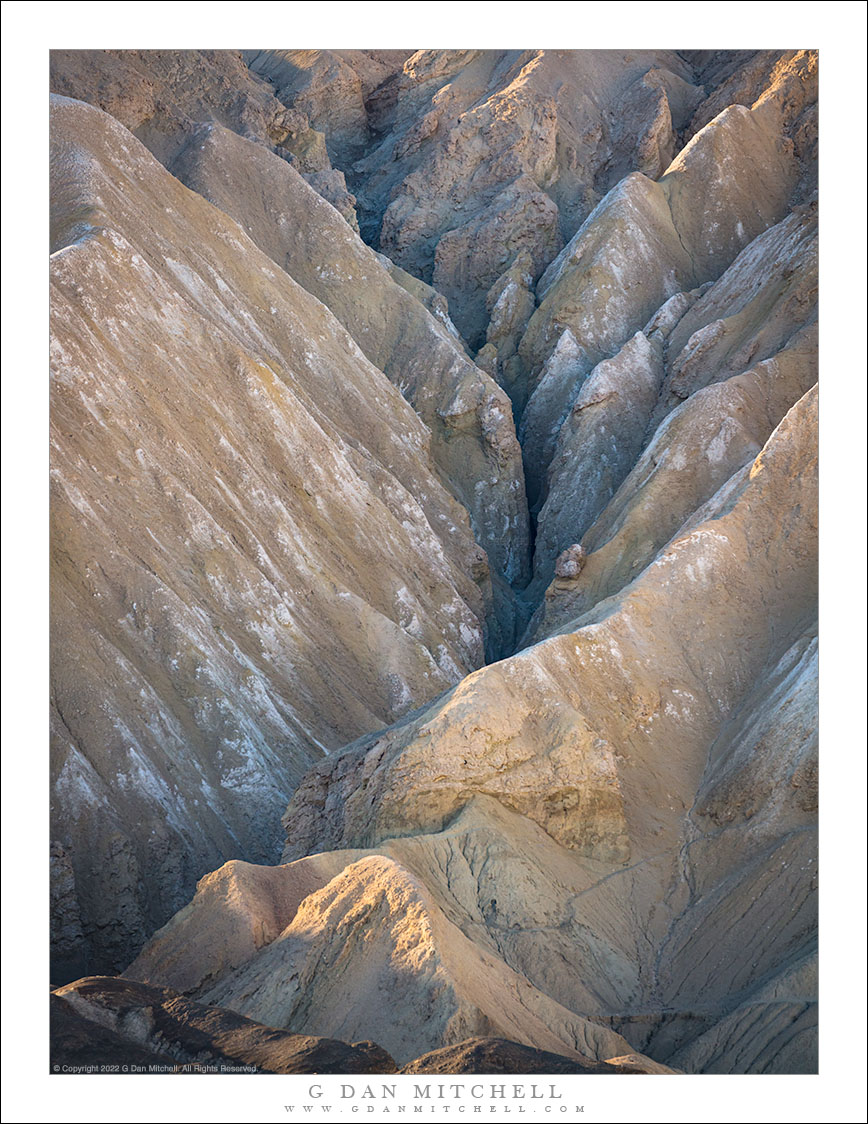
Angle of Repose. © Copyright 2022 G Dan Mitchell – all rights reserved.
Sand dune patterns, Death Valley National Park.
This “intimate landscape” is a sand dune vignette made in a specific place but which could be found almost anywhere. A close look may reveal some details that desert and sand aficionados may find interesting. The large patterns are typically found on one side of dunes where sand blown over the top of the dune collects below. The smaller “ripples” are a common feature of dunes, too, and these are completely undisturbed since the dunes are somewhat remote. Looking even closer may reveal some tinier patterns and tracks across the face of the sand.
The term “angle of repose” refers to the steepest angle at which a material, such as this sand, might collect without collapsing or sliding downhill. It is also the title of a wonderful Wallace Stegner novel, and that is where I first encountered the term. Fans of the history of the American West, especially the part that came after initial explorations, and especially those who have roots in the west may enjoy the novel as much as I did, with its connections to places and types of people that I know from my own experience.
G Dan Mitchell is a California photographer and visual opportunist. His book, “California’s Fall Color: A Photographer’s Guide to Autumn in the Sierra” is available from Heyday Books, Amazon, and directly from G Dan Mitchell.
Blog | About | Flickr | Facebook | Email
Links to Articles, Sales and Licensing, my Sierra Nevada Fall Color book, Contact Information.
Scroll down to leave a comment or question. (Click this post’s title first if you are viewing on the home page.)
All media © Copyright G Dan Mitchell and others as indicated. Any use requires advance permission from G Dan Mitchell.



